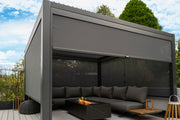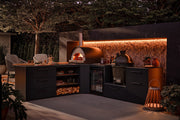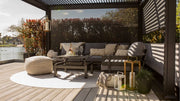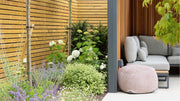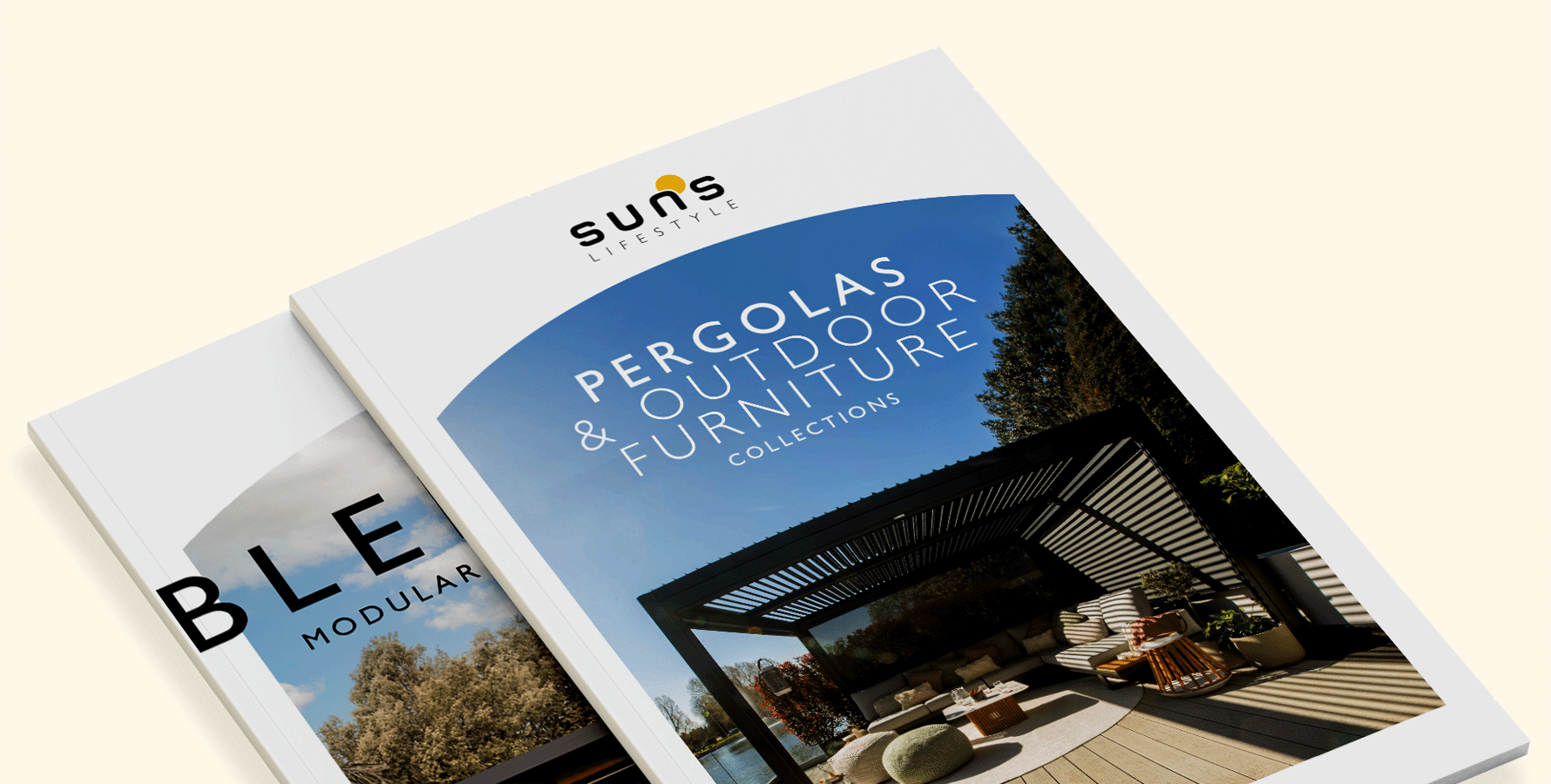
A Chef's Guide to Al Fresco Dining in the UK
Despite the UK's reputation for unpredictable weather, al fresco dining has seen a remarkable surge in popularity over recent years. Outdoor eating is something we’ve enjoyed for centuries, from garden parties to seaside picnics, but it was the pandemic that truly transformed our approach to outdoor spaces, with restaurants, pubs and cafés expanding onto pavements and patios like never before.
Whether you're planning elegant multi-course meals or fun-filled summer BBQs, embracing the open air can elevate your culinary creations and create lasting memories around the table.
Working with British Weather
Creating a functional dining space in a British garden begins with adapting to our variable climate. The ideal garden dining area incorporates flexible protection elements that can be deployed or retracted as conditions change. Retractable pergola roofs and parasols with weighted bases provide crucial shade during summer months while offering quick shelter during unexpected showers.
For year-round enjoyment, consider installing a pergola with weatherproof sides that can be opened in fine weather and closed when temperatures drop or rain threatens. Strategic planting can also serve functional purposes - deciduous climbers like wisteria or grapevines trained over pergolas provide dappled shade in summer while allowing warming sunlight through in winter months.
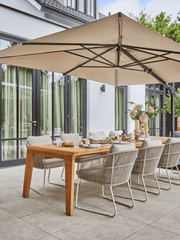
Creating the Perfect Dining Environment
The foundation of unforgettable garden dining experiences is in thoughtful spatial design. Position your dining area to maximise natural advantages, such as the sunrise for beautiful breakfast spaces, dappled afternoon shade for laid-back lunch settings, or evening sunset views for dinner gatherings under the stars. Pergolas often serve as the backbone of outdoor dining areas, creating defined "rooms" within the garden while supporting climbing plants that provide natural cooling, fragrance, and visual interest overhead.
Zoning is essential in creating flow between functional areas - consider the distance between cooking and dining spaces, making sure you allow sufficient room around tables so you and your guests can circulate, and create transitions through planting or changes in level. The aim should be a blend of both home and garden, with boundaries between indoor and outdoor spaces artfully blurred through consistent design languages and transitional elements.
Evening dining, particularly in spring and autumn, benefits from thoughtfully positioned patio heaters, fire pits or infrared heating systems mounted discreetly overhead. The most successful garden dining spaces don't fight our weather patterns but work harmoniously with them, creating microclimates within the garden that extend the outdoor dining season well beyond the traditional summer months.
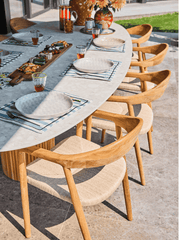
Outdoor Kitchen Essentials
The outdoor kitchen has evolved far beyond the basic barbecue station to become the heart of sophisticated garden dining. For serious outdoor cooks, built-in kitchens featuring weather-resistant cabinetry, dedicated work surfaces, and multiple cooking options represent the gold standard.
Weather-resistant materials are paramount - stainless steel resists corrosion in wetter climates, while concrete or stone countertops withstand temperature fluctuations and UV exposure. Roofing is also key to protect your kitchen from the elements so you can cook and entertain in all weathers, but you also want to consider placement so you can remain engaged with guests while preparing the meal.

Garden Dining Furniture for Comfort and Style
Selecting appropriate furniture forms the foundation of comfortable garden dining that you can enjoy for hours. Durability and maintenance should guide your material choices - teak and other hardwoods develop attractive patinas over time and remain comfortable in varying temperatures, while powder-coated aluminium offers lightweight versatility with minimal maintenance.
Extendable tables also prove invaluable for accommodating varying groups while maximising space efficiency in your garden. Where possible, choose integrated storage such as in bench seating to keep blankets and cushions readily available for temperature changes.
Thoughtfully-chosen accessories elevate the experience too - think outdoor-specific tableware that combines durability with aesthetic appeal, like shatterproof glassware and weighted tablecloths for breezy conditions.
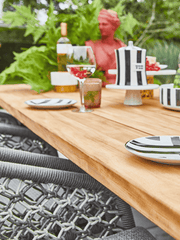
Lighting and Ambiance
Lighting transforms garden dining spaces to magical as the daylight fades. Layered lighting creates depth and dimension - begin with structural illumination that defines key architectural elements like pergola frames or step lighting for safety, then add ambient lighting through waterproof LED strips under benches or weatherproof fairy lights strung overhead. Beyond lighting, consider how sound shapes the dining experience - strategically placed speakers provide background music, while water features mask surrounding urban noise.
The final checklist for success includes flexibility, preparation and an adventurous spirit that sees rain showers as part of the story rather than its ending. As the seasons gradually shift and outdoor dining seasons extend, food enthusiasts have plenty of opportunities to develop a distinctive al fresco experiences.

Explore our range of pergolas and furniture collections, to create your perfect summer set-up.

